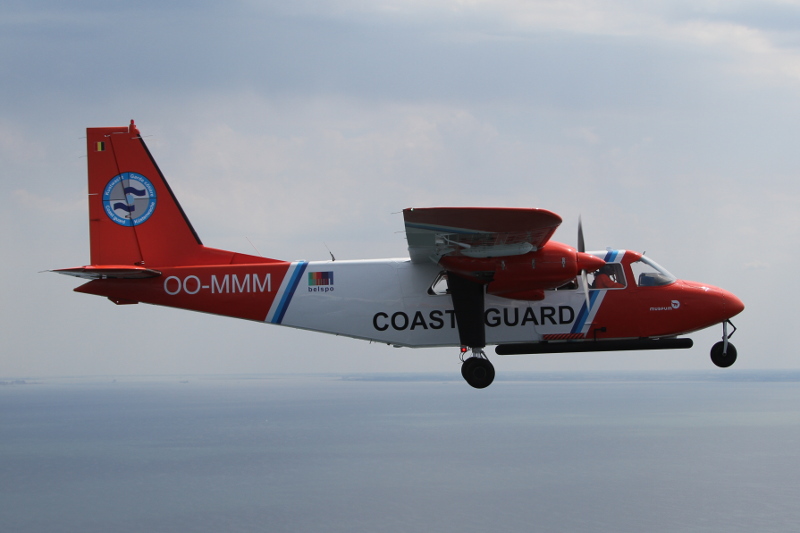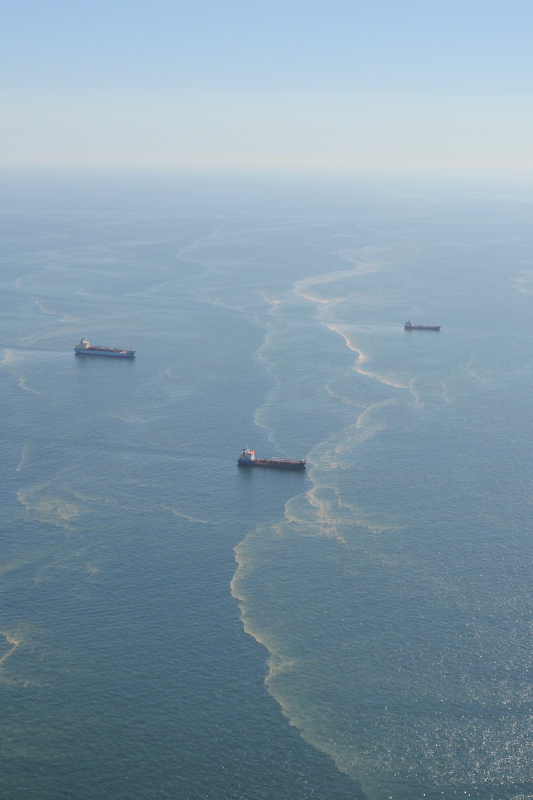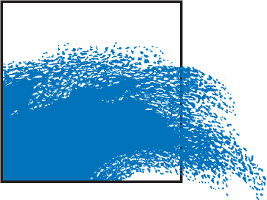Aerial surveillance program
MUMM is responsible for the implementation of the national aerial surveillance program above the North Sea. To this end, it uses an aircraft of the Britten Norman Islander type that is equipped with scientific sensors for the detection of marine pollution, and cooperates with the Belgian Defense, which supplies the pilots. Since 1990 this program has been delivering important results. It’s the core tasks are: supervision of illegal and accidental marine pollution and monitoring of the marine environment. In terms of monitoring the sulphur exhaust from ships, Belgium is currently playing an international pioneering role. In addition, the plane participates as well in the internationally coordinated monitoring of oil and gas installations in the North Sea. Furthermore, the team has some important scientific monitoring tasks including marine mammals counts and regular monitoring of various environmental licensed human activities at sea, and fishing activities on behalf of the Flemish Sea Fisheries Service. This way MUMM makes an important contribution to the sustainable management of the Belgian sea. Finally, the aircraft also plays a broader maritime surveillance role in support of other competent authorities within the framework of the Belgian Coast Guard.
-
Operational marine pollution from ships (MARPOL Annex I, II and V)
-
Shipping accidents and (risk of) accidental marine pollution
-
Broader maritime surveillance within the framework of the Belgian Coastguard
History
The national program of aerial surveillance over the North Sea was started in 1990 by the former Management Unit of the Mathematical Model of the North Sea (MUMM), in collaboration with the Ministry of Defense. MUMM equipped a military Britten-Norman Islander aircraft for scientific assignments, while the Ministry of Defense supplied the aircraft and the pilots. Although the aircraft was transferred from Defense to the Royal Belgian Institute of Natural Sciences, the Belgian Defense still provides the pilots meaning the efficient cooperation Science Policy-Defense remains. The specifically modified environmental monitoring instrumentation were completely modernized in 2012.
In 2017 the airplane underwent a complete makeover. The design with new colours, inspired by the logo of the Belgian coast guard, emphasizes the current coast guard character of the many missions of the surveillance aircraft. Aerial surveillance over the North Sea has been an important operational pillar for many years to support environmental policy in the North Sea. Although monitoring compliance with environmental regulations remains the main task of aerial monitoring, the program serves also a broader operational framework in support of other coast guard partners.
The contribution of the coastguard aircraft is situated in three areas:
- Enforcement
- Emergency interventions
- Scientific monitoring at sea
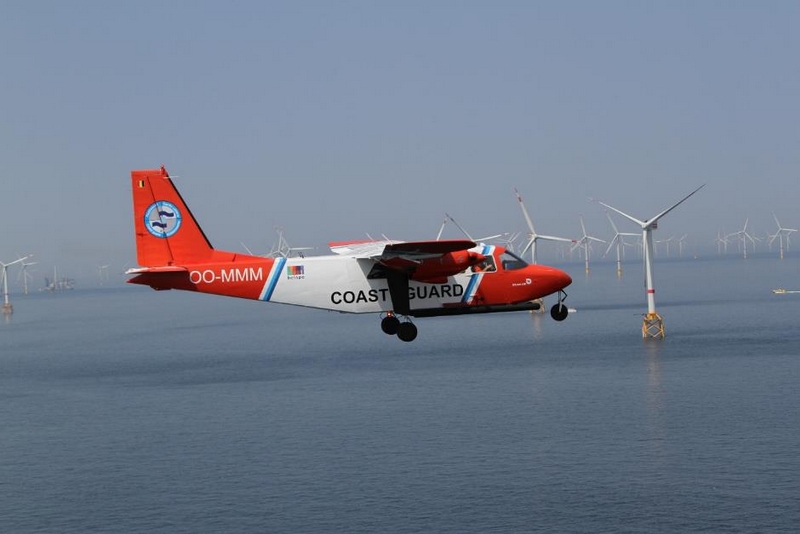
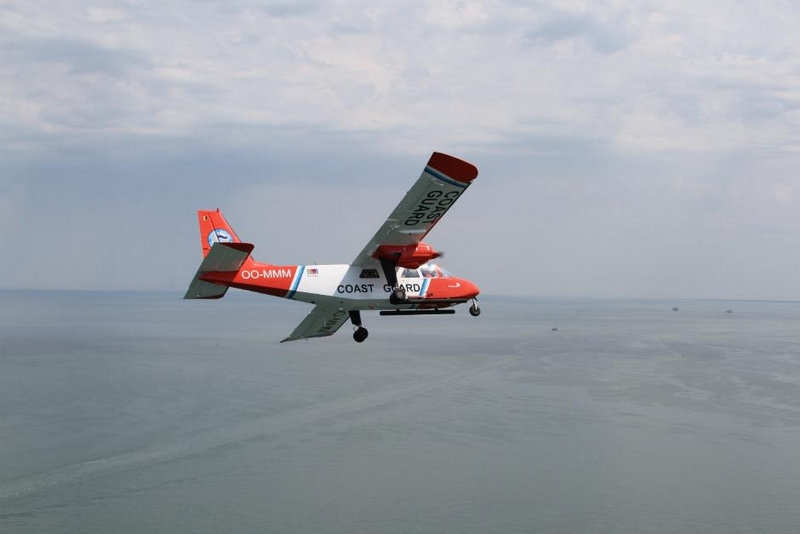
Operational marine pollution (Marpol Annex I, II & V)
Since the start of the monitoring program in 1990, the aerial detection of marine pollution is the main task of the aircraft. The international discharge standards as mentioned in the MARPOL 73/78 Convention are to be respected. Operational pollution caused by oil (Marpol Annex I) or other harmful liquids (Marpol Annex II), which almost exclusively come from ships in front of our coast, are detected with specific sensors, such as SLAR and IR sensors, on board of the surveillance aircraft. Pollution control flights take place throughout the year, both at night and during the day and both during the week and at the weekend.
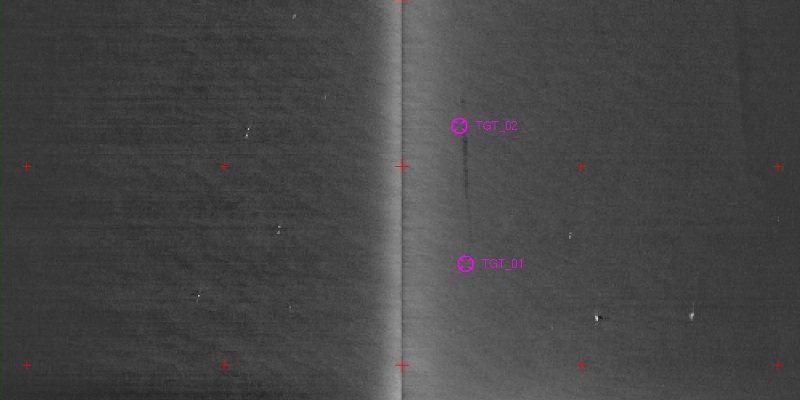
Belgium is not alone in this: pollution control flights were started under the Bonn Agreement, under which all North Sea countries have committed their self to perform regular air surveillance over their waters in order to maintain international emission standards for ships. The regular presence of surveillance aircraft specially equipped with sensors above the sea has a significant deterrent effect on potential polluters. And although the chance of catching a polluter in the act at sea remains rather small, a ship suspected of an infringement risks heavy fines in the order of a few hundred thousand to more than a million euros.
The low number of findings of operational oil discharges from ships in recent years might seem to illustrate that the issue is now under control, but recent cases however, continue to demonstrate that illegal oil spills still occur in front of our coast. The regular monitoring from the air for MARPOL Annex I infringements therefore remains necessary for further dissuasion, and to track down persistent offenders or poorly maintained ships.
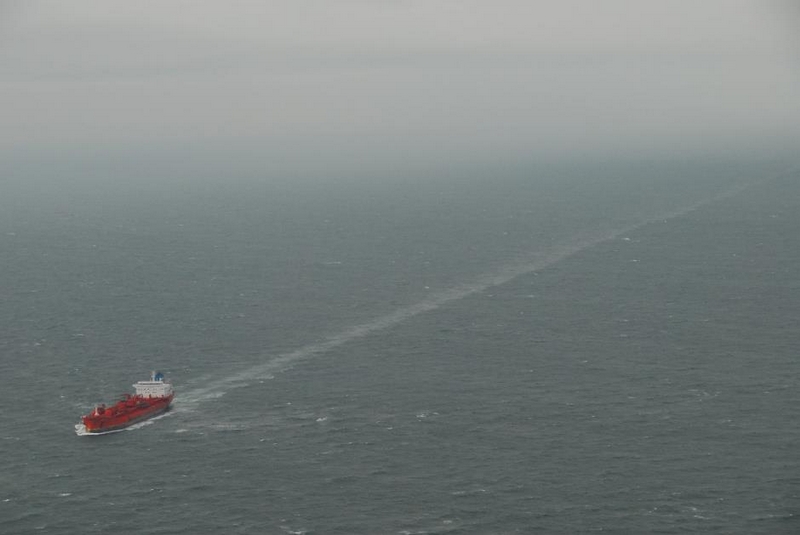
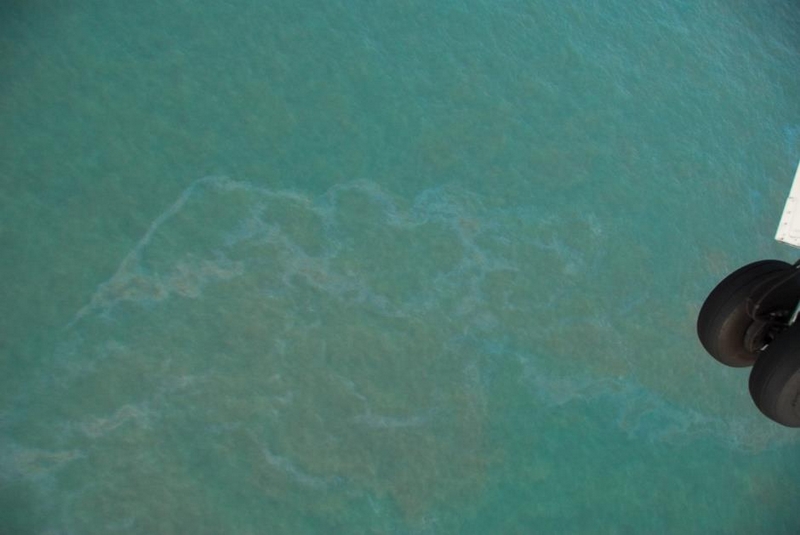
Emissions from ships of other noxious liquid substances unfortunately remain still regularly observed. Some of these discharges violate the MARPOL Annex II discharge standards. Others are legal, but have nevertheless sometimes a negative impact, for example demonstrated by the frequent stranding of paraffin residues on Belgian beaches - which recently led to the formulation of stricter emission standards for such substances. This shows that airborne surveillance of discharges of harmful substances other than oil also remains necessary.
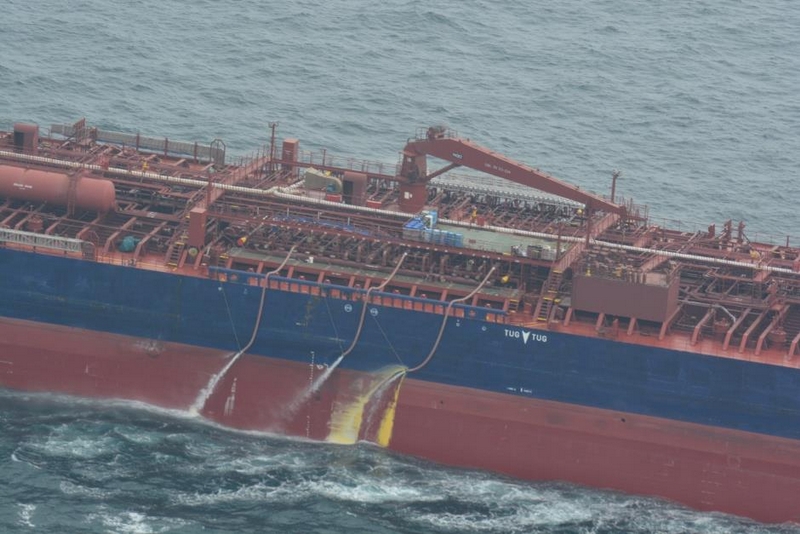
Since several years, the plane is also increasingly used to verify satellite detections of presumptive oil pollution in our marine areas, which are reported to Belgium via the service "CleanSeaNet" of the European Maritime Safety Agency (EMSA). For this satellite surveillance, a similar radar technology is used (SAR or Synthetic Aperture Radar) as on board the aircraft (equipped with Side Looking Airborne Radar – SLAR). Reported satellite detections are therefore systematically evaluated by trained BMM agents.
MARPOL Annex V describes the discharge conditions for the prevention of pollution by (fixed) waste from ships, including garbage, plastics, nets and solid remains of the load. The surveillance aircraft also monitors compliance with these very strict international standards for ship-generated waste in the North Sea. Except for food debris and by-catches from fishing, there is, after all, a virtually general prohibition of discharging ship waste in special protected areas such as the North Sea.
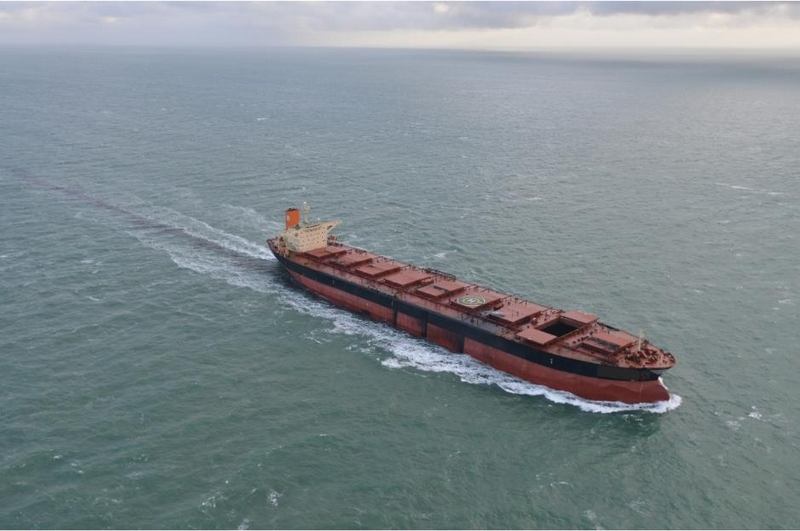
Air pollution from ships (MARPOL Annex VI)
On January 1th, 2015, the amended IMO Marpol Annex VI regulations regarding the introduction of stricter restrictions on the maximum permitted amount of sulphur content in marine fuel entered into force in the European Sulphur Emission Control Area (SECA), which includes the North Sea and the Baltic Sea. Within the European Union, these stricter sulphur standards were ratified by the Sulphur Directive 1999/32/EC of 26 April 1999.
To meet the enforcement of Marpol Annex VI regulations MUMM joined the CompMon (Compliance Monitoring) network. The CompMon network consists of partners active in areas such as marine pollution, maritime transport, mobility, border surveillance, coast guard, shipping inspection, air pollution, meteorology and remote sensing. Within this network, the partners were able to share their experiences and questions regarding the monitoring and enforcement of the Marpol Annex VI regulations. As part of this project, MUMM has purchased and installed a specific sniffer sensor system for performing Marpol Annex VI monitoring at sea. This sniffer sensor system makes it possible to perform measurements of SO2 and CO2 emissions from ships in flight. The exhaust plumes of ships are sampled by means of a probe mounted on the bottom of the aircraft. In addition, MUMM has drawn up a "Best Practice" for organizing air surveillance for Marpol Annex VI monitoring.
These sulphur monitoring flights are currently one of the main focus points of the MUMM operations. The reduction of sulphur emissions from ships is, after all, a top European priority for various important public health and environmental reasons (particulate matter, acid rain and acidification of oceans, etc.). The sulphur monitoring flights are explained in detail on the following web page.
Shipping accidents and (risk of) accidental marine pollution
The observation aircraft has a crucial dual role to play when an accident occurs at sea and in which oil or other harmful substances are accidentally released in the sea:
- Monitoring an accidental pollution from the air
- Providing air support to combat units
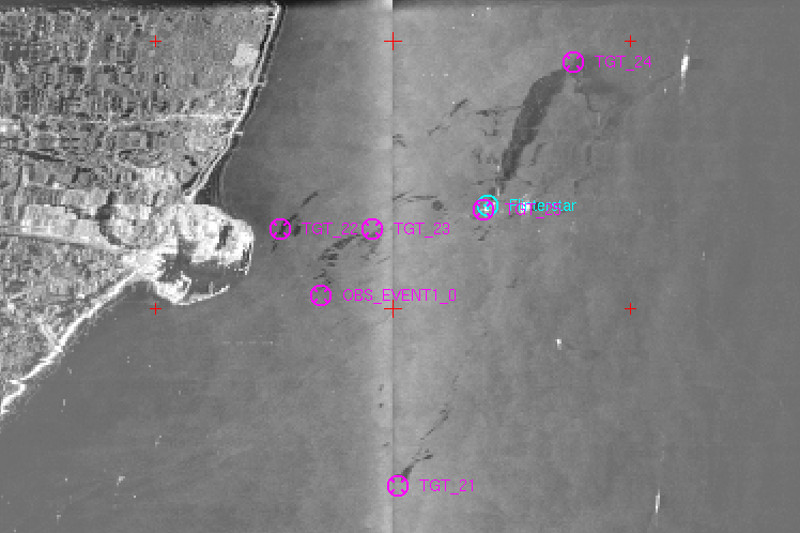
In the event of an accident at sea, the observation aircraft is responsible for monitoring the incident from the air and is able to make a rapid evaluation of the extent of an accidental marine pollution, the threat it poses to the marine environment and the coastal zone, and its controllability. As soon as the observation aircraft has carried out an assessment of the pollution at sea, the Coast Guard Center is notified so the competent services, or an activated crisis committee ashore, are notified in almost real time. The information from the air monitoring also serves as input in mathematical models that quickly calculate the drift of a spill in the near future (1-5 days). The combination of air surveillance and model simulations allows rapid imaging and efficient evaluation of accidental pollution and serves as a basis for determining the scale of the control operations.

In addition, the aircraft is also available for the recovery ships at sea: without air support it is for these vessels virtually impossible to get an overview of the oil spills and they usually don’t succeed (with exception for recovery at the source) to quickly find and clean up the drifting, combatable thicker sections of a spill without aerial support.
This dual service in emergency situations at sea, as recently performed during the Flinterstar incident in 2015-2016, is greatly appreciated by the various authorities responsible for managing maritime accidents, in particular in the context of the General Emergency and Intervention Plan for the North Sea (ANIP North Sea).
In the case of large-scale, cross-border accidental pollution in the North Sea, air surveillance can also be part of international assistance actions and cooperation between North Sea countries under the Bonn Agreement.

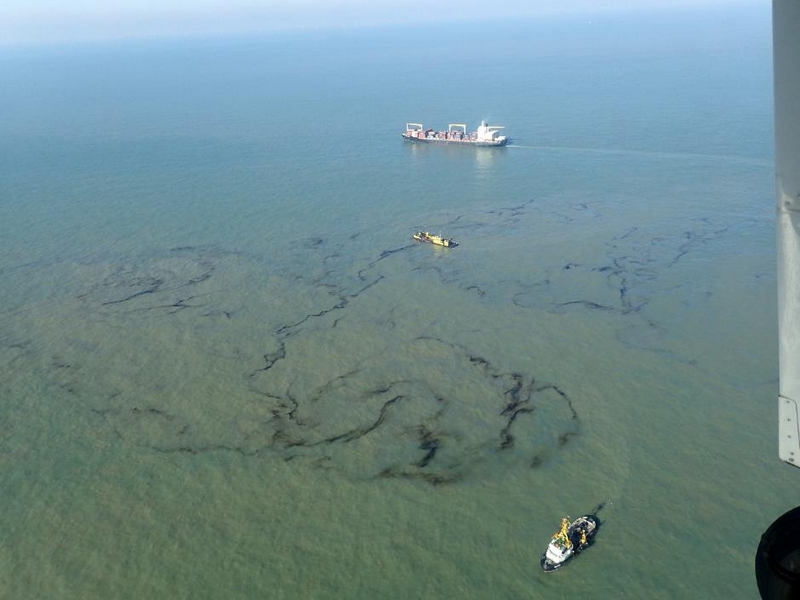
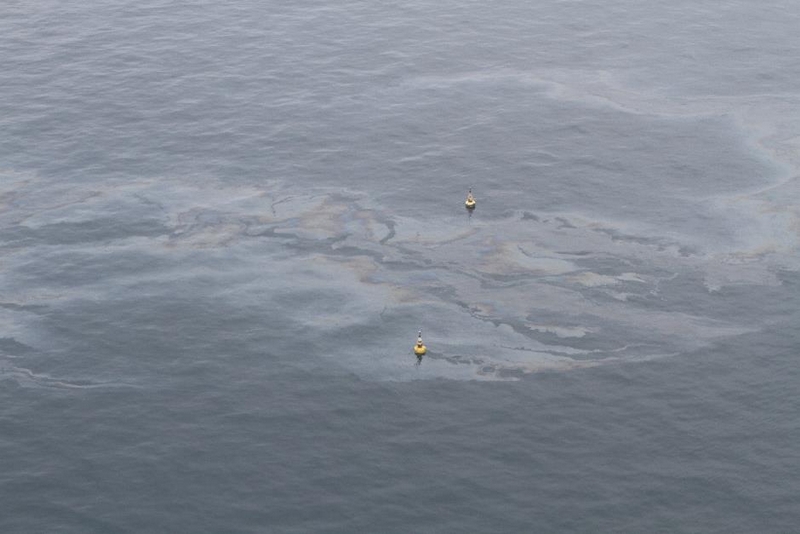
In order to maintain preparedness in the event of an emergency at sea, the aircraft participates annually in one or more national and international pollution control exercises. During such Pollution Exercises (POLEXs), the aircraft performs an evaluation of an experimental spill (usually an oil simulant) and trains on the guidance of sailing recovery and combat units from Belgium, neighbouring countries, other North Sea countries and/or the EU.

International assignments
Although the observation aircraft mainly supervises the Belgian sea areas and the waters surrounding us, it also annually participates in international surveillance operations under the Bonn Agreement. For example, the North Sea countries regularly work together to intensively monitor a specific busy sea area for several days for illegal discharges during the so-called CEPCO operations (Coordinated Extended Pollution Control Operation). Another typical example of international cooperation in the field of aerial surveillance above sea is the annual "Tour d'Horizon" operation in which the drilling platforms in the central part of the North Sea are controlled by each country, including Belgium. This way Belgium contributes to the monitoring and enforcement of marine pollution originating from the offshore industry.
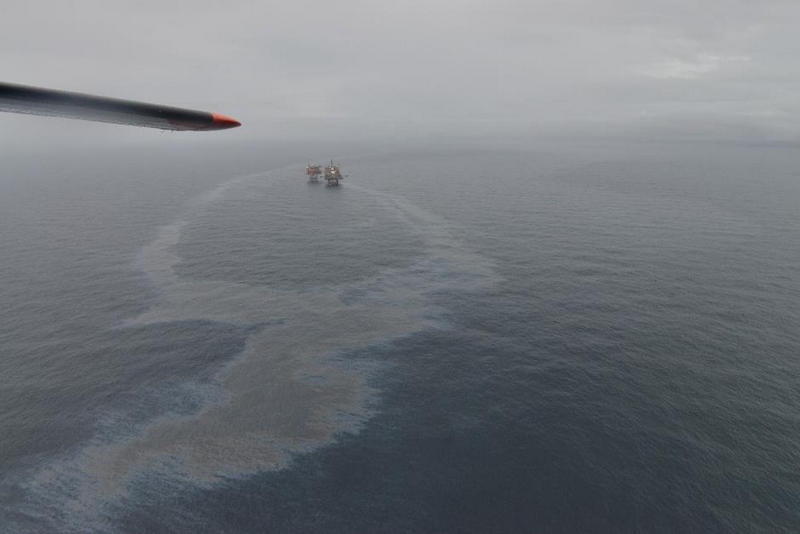
Marine environmental management
In the context of the protection of the marine environment and the sustainable management of the Belgian marine areas, the aircraft also oversees many human activities that require permits: supervision over the wind farms at sea, monitoring of construction and exploitation activities, compliance of environmental conditions, monitoring aquaculture activities, experimental or other special fishery zones, etc.
The aircraft is also used for monitoring of sand and gravel extraction at sea. The operating permits for sand and gravel extraction from the Belgian sea areas are granted to private companies by the FGS Economy. Each licensed mining vessel is equipped with a 'black box' system that automatically records the date, time, position, speed, status of the pumps, etc. MUMM is responsible for the technical management and control of these blackbox systems on behalf of FGS Economy. By reporting during aerial surveillance observed sand and gravel extraction activities the plane provides interesting information on the verification of the black box data.
The plane supervises activities, and regulatory compliance within marine protected areas such as the Special Protection Areas for Birds, the SPAs for conservation (Habitat directive- and Ramsar sites) and marine reserves (Bay of Heist). Specifically this is for example about the monitoring of recreational tangle net fishery to protect legally protected marine mammals, or to supervise commercial or publicity activities nearby marine protected areas.



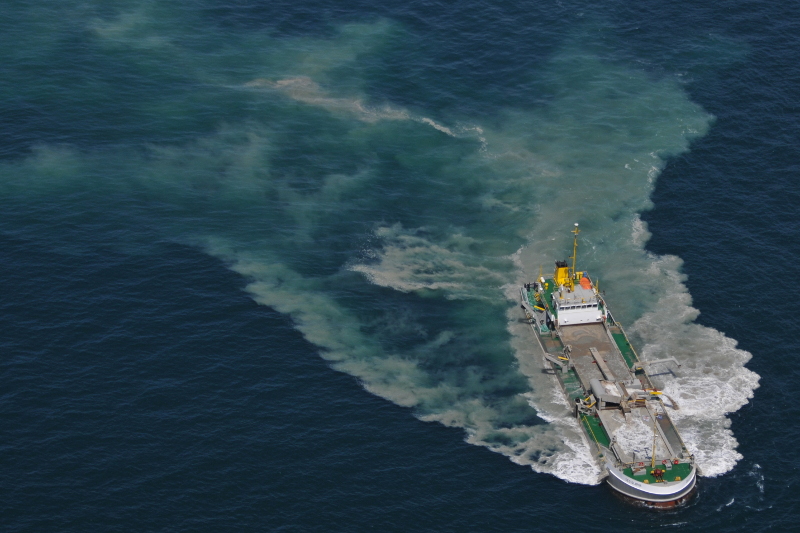
Scientific observations
The aircraft also regularly carries out scientific assignments. As part of the study into the environmental impact of offshore wind farms and the population dynamics of legally protected species, seasonal sea mammal monitoring is being conducted. Marine mammal counts from the air are an ideal method for determining population densities in Belgian sea areas.
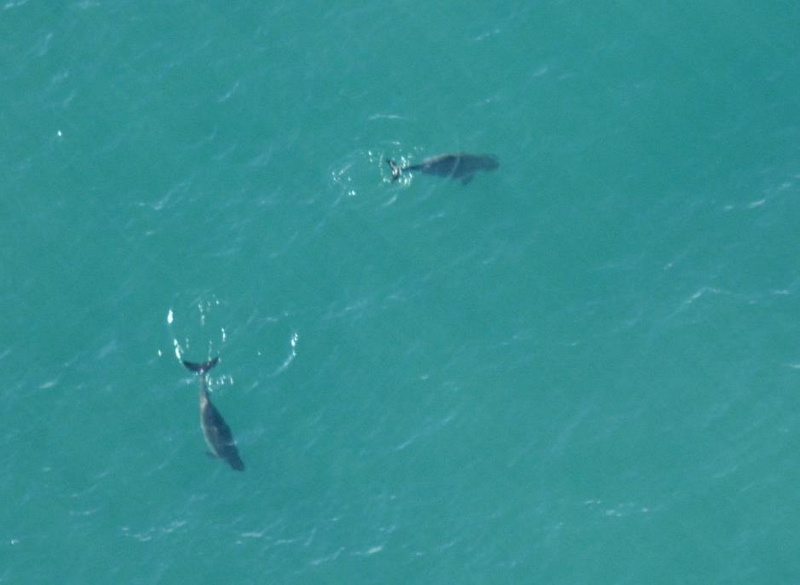
The aircraft is also used for the observation of plankton blooms, such as the phytoplankton spring blooms (Phaeocystis sp.), the natural summer blooms of sea spark (Noctiluca sp.; microscopically small whip animals) or significant jellyfish blooms. This provides useful information for the management of our North Sea and for the scientific research and modelling of marine ecosystems.
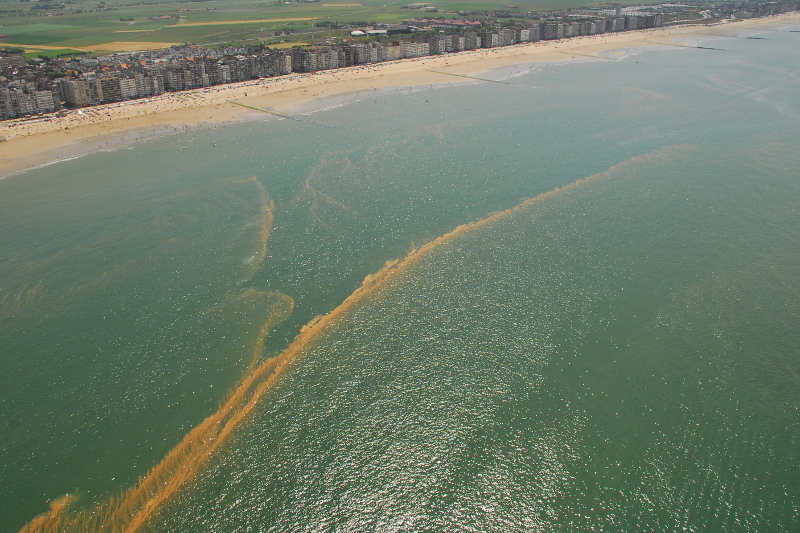
Other notable natural phenomena that can be documented from the air, such as whales, sea fronts, shallow sandbars, floating packages of macroalgae, striking turbidity plumes or wintering seabird groups are reported by aerial operators.
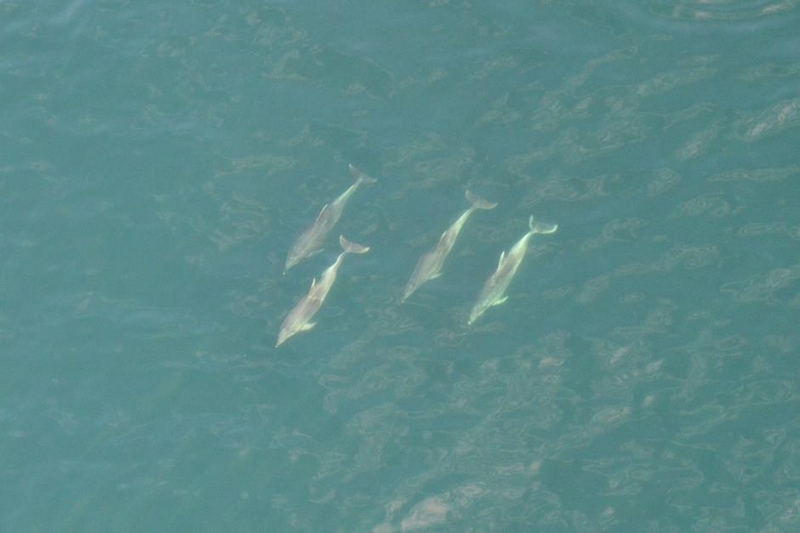
Fishing control flights
An important ancillary task of the observation aircraft since 1993 is the execution of fishing control flights commissioned by the Flemish Public Service of Sea Fishery. The service uses the aircraft and the resources provided by MUMM (localization and communication means, photo and video recordings, etc.) to perform a systematic aerial monitoring of fishing activities both during the day and at night. During these flights, particular attention is paid to compliance with the access restrictions for fishing vessels in the shallow coastal waters (3 nautical mile limit) and the territorial sea (12 nautical mile limit). In the event of a fishing vessel crossing the area, the alleged violation is documented, and the flying fishery inspector draws up an official report. Partly through the deterrent effect of the surveillance aircraft the number of fishing violations decreased strongly over the years.
On behalf of the Flemish Public Service of Sea Fishery, the aircraft also regularly performs international fisheries control flights in coordination with the European Fisheries Control Agency (EFCA). Here the plane and the Belgian fishing inspectors are authorized to operate as well above fishing grounds outside of the Belgian sea areas.
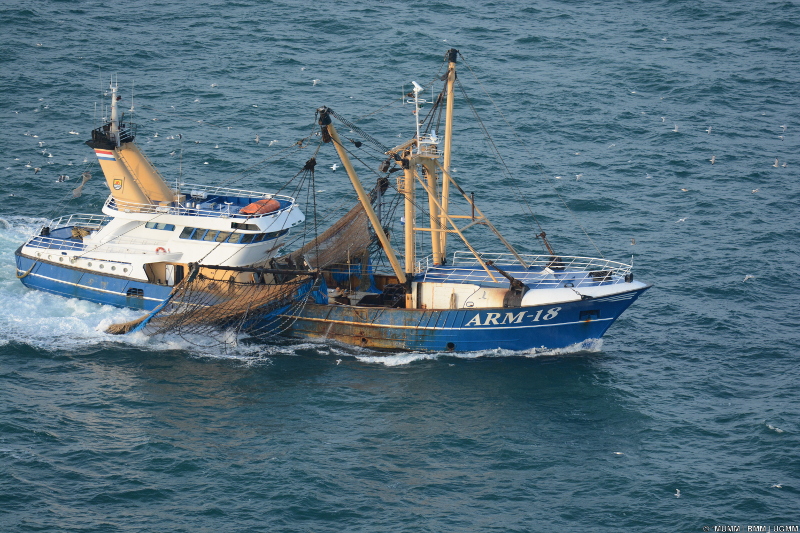
Belgian Coast Guard
As part of the collaboration between the Flemish and Federal governmental departments with responsibilities at sea within the Belgian Coastguard structure, the surveillance aircraft - in addition to the leading role in the field of environmental enforcement above sea - also contribute to the broader tasks of maritime enforcement and maritime safety. Aerial operators of MUMM regular report navigational infringements at sea to the Coast Guard Central (for example vessels sailing in the shipping lanes in the wrong direction), they monitor the areas at sea that are surrounded by a 500 m safety perimeter (For example the wind farms), and they report infringements of the rules on automatic identification systems (AIS) on vessels. Suspicious ship movements at sea that fall under customs and police responsibilities, for example in border areas or in anchor areas on the North Sea, are also reported to the Coast Guard.
The aircraft also participates annually in joint enforcement operations at sea. These coast guard operations, called ‘OPERAs’, are organized by the Maritime Security Center, and allows the temporary coordination of all available resources during intensive multi-day operations at sea. The aircraft supports the sailing patrol units from the air.
As part of the Coast Guard Cooperation the surveillance aircraft, if requested, also helps in Search And Rescue (SAR) operations in the North Sea, commissioned by the Flemish Maritime Rescue and Coordination Center (MRCC Ostend). For example, it may happen that the aircraft participates in a second line in a search for missing persons at sea, as an additional flying means to support the SAR helicopters of the Koksijde Air Force Base and the MRCC.
The aircraft will inform the Coastguard further also about striking floating objects and lost cargoes which may pose a risk at sea, damage to infrastructure, violations concerning cultural heritage, etc.
